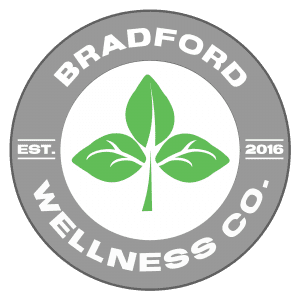Ever made a snowball?
Here are your basic directions: Grab a handful of snow and begin to shape it into a tight ball.
As you mold the snow, make sure to pack it tightly with your hands to help it hold its shape.
Once you’ve formed a ball shape, roll it around in the snow to add more layers and help it become bigger.
Keep rolling until the snowball reaches your desired size.
Wait, you already know this?
Then you already have the knowledge you need to begin changing your life for the better.
The Debt Snowball
The debt snowball is a popular method for paying down debt, but the approach can also be applied to managing your physical health.
The debt snowball is a method of paying down debt by prioritizing the debts with the smallest balance first while making minimum payments on all other debts.
The idea is that once smaller debts are paid off, more money can be applied to pay off larger debts, slowly “snowballing” one’s way toward financial freedom.
The method has popularity in recent years and has been promoted by personal finance guru Dave Ramsey, author of the Financial Peace University program.
The Health Snowball
The debt snowball can be applied to physical health improvement.
With this method, you would prioritize the easiest and smallest habit changes first, while still paying attention to other habits that need improvement.
Once you have successfully established a few small healthy habits, such as drinking more water or making healthier dietary choices, you can focus on larger goals, such as exercising three times a week or starting an exercise program.
As you gradually improve your health through small wins, momentum will build and it will become easier to form new habits and maintain them for long-term success.
This approach encourages consistency and can help increase motivation over time as goals are reached.
Along with the physical benefits of improving your health, it can also have a positive impact on mental well-being as increased self-confidence builds from being successful in achieving goals.
The Mental Health Snowball
The debt snowball method can also be applied to mental health.
The idea is to start with smaller, more manageable goals that will help build the confidence and momentum needed for the larger goals.
For example, if one has a goal of reducing stress in their life, they can start by taking small steps such as journaling or practicing mindfulness activities for five minutes each day.
Maybe you start by being honest when a family member asks how you’re feeling.
You choose your starting point.
Once these activities become habits and one can see progress, it becomes easier to tackle more difficult tasks like creating a plan to manage anxiety or setting boundaries with people who cause stress.
By starting small and focusing on the achievable goals first, it allows individuals to make steady progress towards their larger goals while avoiding overwhelm and burnout.
Additionally, when starting on the journey to mental health wellness, it’s important to focus on self-compassion rather than self-criticism.
When one feels successful in achieving their small goals, it helps them build resilience and confidence in tackling more challenging goals.
This snowball effect of making incremental changes towards better mental health helps individuals realize they don’t need to make drastic changes – small steps taken regularly will lead them closer towards their long-term goal of improved mental wellness.
To ensure success with this approach, it’s important for individuals to track their progress through logging successes achieved along the way.
This helps them see how far they’ve come and encourages them to continue reaching for new heights of mental wellbeing.
What’s Your Snowball?
Basically, anything can be a snowball.
Here are Mr. Ramsay’s Debt Snowball steps, and how to apply them to wherever you want to see improvement in your life.
- Identify your “debt”: In this case, “debt” refers to any negative habits or health problems that you want to overcome. Examples might include smoking, a sedentary lifestyle, or unhealthy eating habits.
- List your “debts” in order of priority: Just as you would prioritize your debts when using the debt snowball, you’ll want to prioritize the health problems you want to tackle. Start with the issue that’s most important to you or the one that’s causing the most harm.
- Develop a plan of attack: Similar to creating a repayment plan for your debts, you’ll want to develop strategies to tackle each health issue on your list. For example, if you’re starting with a smoking habit, your plan of attack might include methods such as nicotine replacement therapy, meditation, and exercise.
- Tackle one issue at a time: Instead of trying to overcome all your health problems simultaneously, focus on one issue at a time. This approach allows you to make a significant dent in one problem while avoiding the overwhelm that often comes with trying to address everything at once.
- Celebrate your accomplishments: Just as you get a sense of satisfaction from paying off a debt, you’ll want to celebrate your health milestones. For example, once you successfully give up smoking, celebrate the achievement and recognize the positive impact it has on your health.
The debt snowball approach can be a useful tool for taking control of your physical health, mental health, or any other area in your life.
By prioritizing your health issues, developing a plan of attack, and tackling one problem at a time, you can achieve positive outcomes and feel empowered to make lasting changes for your overall well-being.
CBD and Snowballs
CBD can be a powerful ally in your snowball approach to improving mental and physical health.
CBD is one of the many compounds found in the Cannabis sativa plant.
It has been used for centuries as a natural remedy for ailments such as pain, inflammation, anxiety, and depression.
In recent years, it has gained more public recognition due to its potential benefits for individuals seeking relief from chronic conditions.
Research suggests that CBD could be helpful for those struggling with mental health issues because of its potential to reduce stress and anxiety.
In addition to providing relaxation effects that can help ease tension, CBD also boosts serotonin levels in the brain—a neurotransmitter associated with feelings of happiness and wellbeing.
This makes it an ideal tool for individuals looking to naturally improve their mood and outlook on life.
In regards to physical health benefits, studies have shown that CBD may help reduce inflammation and pain caused by arthritis or other chronic conditions.
Additionally, some research indicates that CBD may be beneficial for reducing symptoms associated with certain neurological disorders such as epilepsy and multiple sclerosis.
Therefore, incorporating CBD into one’s wellness routine could be beneficial for those who are suffering from physical or mental health issues related to their overall well-being.
In a Nutshell
The journey to better mental and physical health doesn’t have to be overwhelming or a solo endeavor.
By adopting the Snowball Approach, you can start with small, manageable steps, gradually building momentum as you tackle bigger challenges.
Remember, every small victory counts and brings you closer to your ultimate goal of improved wellbeing.
Incorporating aids like CBD alongside a supportive community can make your journey smoother.
So, don’t wait!
Start your snowball today and embrace the path to a healthier, happier you.


